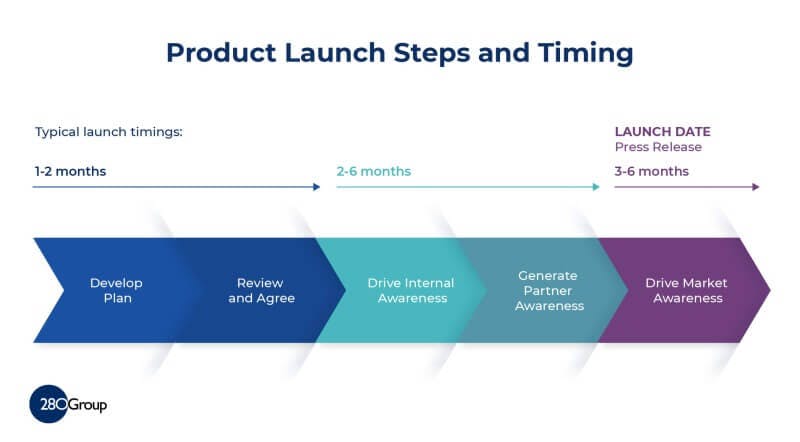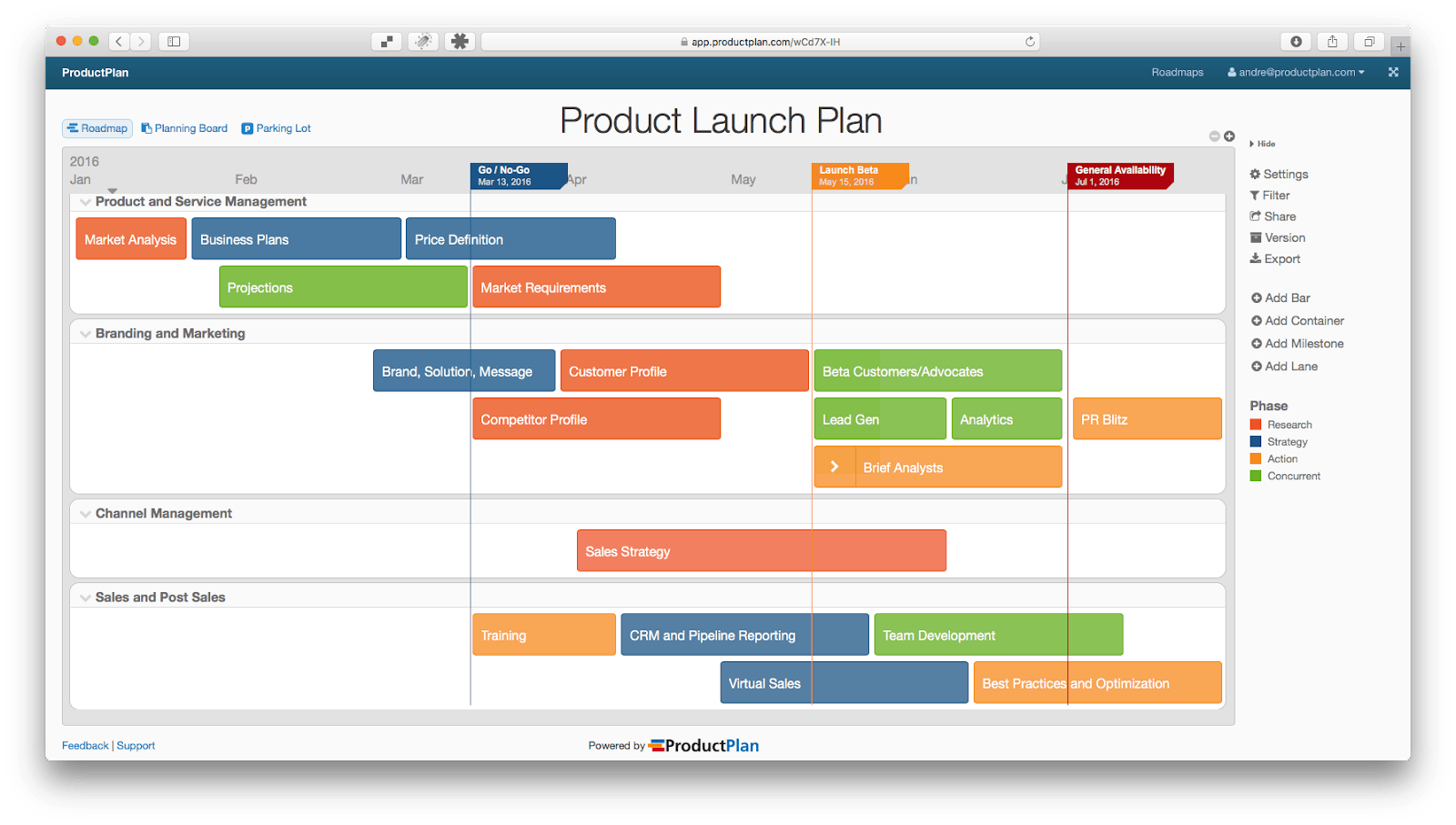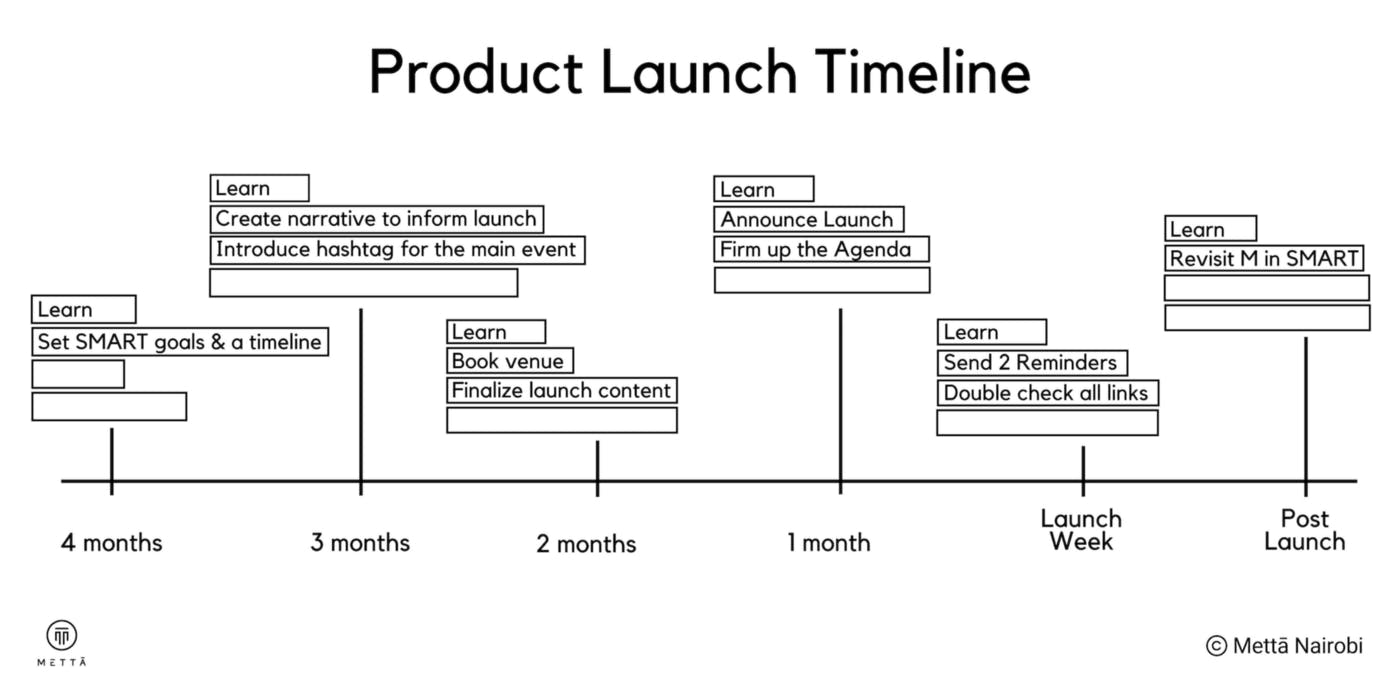Product launch: plan, types and tools
Jun 21st, 2022

According to Harvard Business School professor Clayton Christensen, around 30,000 new products are launched annually. Unfortunately, most fail due to different factors, up to 95% based on some estimates. One of the reasons is a lack of proper planning. For example, retail products should be approved within six to twelve months ahead of time, without any schedule violations. Otherwise, a production department and other teams cannot finish the job within the timeframes outlined in an initial plan. Thus, a successful launch requires mapping out a schedule for each stage of product development.
The situation with software products is similar - there is a large gap in time between the product development and planning and actual release even if you follow Agile principles. The average schedule overrun for software projects is 33%. The project releases often get delayed because of short timelines, poor planning efforts, and optimistic scope estimates that put pressure on product developers. This leads to ongoing changes in the requirements, increased costs, and time to market.
Product launch is one of the most crucial stages of the entire product development process as it allows for grabbing consumers’ attention and converting potential clients into long-term customers. Once consumers get interested in one product, they might discover the other offers and want to learn more about the company. More customers will result in increased business visibility and higher revenue. Moreover, a well-thought-out launch strategy might positively impact the company’s reputation. You can demonstrate that you value customers’ opinions by delivering a product that satisfies their needs. Now let us consider how to develop an effective launch plan and execute a perfect product launch.
What is a product launch?
Product launch is a coordinated set of activities to introduce a new or upgraded product to the market, make it available for purchase and announce it to the world. It involves a series of actions taken by a company to attract customers, draw attention to the product, create demand, and increase brand awareness and brand loyalty. A product launch is more than a one-time event; it entails designing marketing and sales strategies and optimizing the product. The process involves the participation of several teams, including the sales department, customer service specialists, product development and product marketing teams, and event management team.

The main goal of the product launch is to attract consumers’ attention and convince them to purchase the product through engagement with a target audience. The process includes various tasks: understanding customer requirements, product development, testing, marketing, and promotion. These tasks are usually broken down into three stages: pre-launch, launch, and post-launch.

At the pre-launch stage, a company establishes goals and creates a roadmap. Then, it conducts research about the product and target market, develops marketing strategies, and chooses platforms to implement them. Next, the launch stage is dedicated to organizing events, creating press releases, blog posts, advertising videos, or email marketing campaigns to reach the target audience. At the final post-launch stage, the project management team analyzes data and customer feedback to add, modify or remove some product features.
Further, we will discuss the types of product launches and categorize them according to the scale of the launch and the stage of the product.
Types of product launch
Different products require different types of launches. We will describe several situations, and review product launches suitable for these occasions. There are three main types of product launch according to the specific event:
Creation of a new product. In this case, a product launch is dedicated to demonstrating an innovative product or brand-new feature that benefits the end-user.
Existing product support or maintenance. Some products like smartphone applications or web-based software require constant updates or adjustments. Product managers should frequently make upgrades to stay ahead of the competition. Marketers use various techniques to remind customers that the company has updated the feature list or improved the product performance. This type of launch is prevalent in fast-paced industries like e-commerce and technology.
Product revisions inside the company. Internal product updates are a part of routine company operations and are intended only for team members and key stakeholders. These revisions keep stakeholders engaged and help solve organizational problems related to product maintenance.
Let us discuss types of product launches according to size. There are three main approaches:
Soft launch. This type of product launch is a go-to-market strategy that involves launching a product ahead of time with little to no marketing support for a limited number of users. Soft launches are usually planned as warm-ups for a full launch to provide developers an opportunity to recreate real-world interactions with their product. With a soft launch, a company can monitor user reactions, fix the existing problems, or keep the product a secret before the official launch. Besides, it allows companies to test user acquisition strategies in a similar market or optimize marketing spend.
Minimal launch. This type of product launch is suitable for small products or companies with a limited budget. A minimal launch will be a perfect solution for a company that wants to announce incremental changes in the product.
Full-scale product launch. The term refers to the commercial offering of a product to a specific geographic region or entire national market. A full-scale launch is expensive, and many businesses are afraid to invest in it. But on the other hand, a full-scale launch provides the highest chances of long-term success for the product.
Next, we consider how to develop a successful product launch plan for every situation and type of launch described above.
Product launch plan
A product launch plan is a document that describes the steps and deadlines to determine your objectives, develop a strategy and assign tasks to various teams. The plan includes activities, ideas, and processes needed to implement the go-to-market strategy for the new product. Pre-launch market research, beta testing, and user onboarding are also part of the overall strategy. Let us take a closer look at the main steps of the product launch plan.

Establish product launch goals and timelines
While developing a strategy, define the goal of the product launch to ensure that all team members are on the same page. If your team clearly understands the objective of launching the product and its benefits, it would be easier to convince the customers to complete a purchase. Otherwise, your team will be disoriented and unsure of what to do next if there is no clear direction to follow. Examples of goals might include
- increasing the number of conversions and sign-ups,
- building brand awareness,
- improving user experience and customer happiness,
- lowering the churn rate and so on.
Make a timeline for your product launch plan. First, divide the responsibilities among your team members according to the following fields: product management, marketing communication, brand management, channel management, sales, and after-sales service. Next, identify milestones and set deadlines for your team to deliver the product on time. For examples, consider including the following milestones: launching a beta version for early users, critical industry events, briefings with industry analysts, lead reporting, product testing, and launch date. The deadlines will help you attract attention to important dates and events, identify key stages in product launch and emphasize your primary objectives.

The timeline for product launch usually takes about six months. In the early stages marketing team works on messaging and branding. During the following months, the product management department completes the pricing strategy. In this phase, sales and post-sales teams undertake product training. Finally, before the launch date, the cross-functional team distributes a beta version of the product to early users, develops the CRM and lead reporting processes, and informs industry analysts.
Determine the success metrics
You should identify the specific metrics that you will use to decide whether your product launch is successful. It will focus your team’s attention on the final goal and ensure that everyone understands what they are striving for. You can break down the metrics according to the AIDA model. For example, awareness metrics may include ad reactions or page visits. Interest metrics might analyze user engagement, such as time on page or the average number of pages per session. Desire metrics can be the number of new subscribers, calls, or leads. Finally, action metrics are related to your SaaS sales results, e.g., number of customers or total revenue.
Identify your product positioning
Positioning is one of the most crucial aspects of a product launch plan. To demonstrate the significant features of your offer and capture customers’ attention, you need to consider what the product does, why it exists, who it benefits, how it solves consumer problems, and why it is the best choice among the competitors. You can gather information by collaborating with marketing, sales, and customer support teams. To get a technical grasp of the product, consult product managers and engineers. Also, test the product itself to understand the benefits better.
You need to show users your product’s value proposition and core features and explain how it can solve their pain points. Create a mission statement that describes what your company stands for. The next step is to convey a compelling message to impress the potential users of the product. Formulate a unique value proposition containing your strongest competitive advantage and how you can meet customer needs. This can be done using a value proposition canvas methodology.
Understand the end-user
Before the product launch, you need to have a thorough understanding of the customers and their specific requirements. By getting acquainted with your target market, you will be able to identify priority areas of your awareness campaigns and choose the media to which your public relations team will pitch a product. You need to define the target audience and customer pain points, develop a strong marketing strategy to get noticed by the end-users and ensure that consumers are aware of your product’s value.
Develop buyer personas taking into account your target customers’ demographics, industry, role and company size, goals and challenges, and buying motivation. Collect customer data from social media accounts, email subscribers, and web analytics tools. Gather information from market research, competitor news releases, and industry statistics. Interview your existing customers and prospects to understand their needs and challenges and identify platforms where they spend most of their time.
Segment your buyer personas according to features that distinguish one group from another. Present the personas in a convenient format like a short video, infographic, or a bulleted list. At the pre-launch stage, test your product with early users to make sure everything works well. Finally, plan your customer retention strategy for the post-launch stage.
Conduct competitor research
With competitor research, you can understand your strengths, weaknesses, and competitive advantage to encourage customers to buy your product. Analyze competitors’ offers from the user’s point of view to identify their benefits, such as good usability, and drawbacks, such as poor customer service. Use your findings to improve your product and show it in the best light. Pay attention to competitors’ pricing and onboarding experience. Check the methods they use to keep customers engaged, introduce them to the product and provide information to get started.
SWOT analysis is a perfect framework to examine the crucial aspects of competitors’ operations. Strengths and weaknesses will help you analyze assets and resources the company may have, such as budget, equipment, and the coverage of existing market segments. Threats and opportunities will allow you to access competitors’ relationships with consumers and stakeholders and technological breakthroughs.
Determine the channels to reach your audience
Determine which marketing channels your target audience frequently uses, learn their preferences and develop strategies for promoting your product launch on these platforms. Use your company blog, targeted social media advertisements, and email marketing campaigns to get the most out of your product launch. Paid advertising allows you to get your offer in front of the right people and deliver the right messages to them. If you are going to focus primarily on organic channels by investing in content marketing, you need to choose topics that will be relevant to your potential product users. Consider how you can change your website to attract the target audience and present a new product to customers.
Create a media outreach strategy. Produce engaging and easily accessible content for journalists, public relations experts, and other media professionals. Use your existing partnerships with newspapers, magazines, and online media to announce the new product launch. Collaborate with influencers and other brands to convey your message and increase your reach.
Create promotional content
Work with the marketing team to generate content, such as blog articles, social media posts, landing pages, product tutorials, and emails. Compare the publications on the competitors’ websites with your content. Study the best-performing posts and videos and create articles on similar topics. Use tools like Ahrefs and SEMrush to identify keywords your competitors are targeting and then create a content plan to include articles and landing pages to target these keywords.
Produce shareable content for the launch day to encourage people to talk about your new product. One of the best working methods to promote the product is word-of-mouth marketing. The more people share information and communicate about your product, the greater the chance that your potential customers will notice the offer. Spend time developing a high-quality blog that discusses your business or relevant topics that customers will find interesting. They will share your content on their pages and social media platforms and constantly bring traffic to your website.
Launch the product and analyze the results
Once you have released the product, it is time to collect customer feedback and compare your metrics against the original plan. Think about the goals you have achieved and why you have failed to reach some objectives. Analyze data from the sales pipeline and speak to sales representatives to understand how the consumers react to your content and messaging. Use customer surveys to identify weak points of the product and make changes.
Consult with marketing and customer success teams to gain additional insights about your product performance. Then focus on retention and bring some suggestions to keep your clients engaged. From this point, your primary task is to maintain long-term relationships with the customer base, introduce new product features and provide valuable content to keep them interested in your company.
Further, we will list some helpful tools to ensure the perfect product launch.
Tools for successful product launch
Product launch is not an easy task, but several tools can help you automate your operations and generate maximum awareness for your product with little effort.
Product Hunt is a platform that connects creators, marketers, and real users. The website allows product developers to receive honest feedback regarding their products’ functionality from people who want to explore new solutions. Users can leave comments and reviews, learn technical details and contribute to the development of your product.
Wynter is a B2B messaging testing tool that provides you with feedback from your target audience. By using the solution, you can discover weaknesses in your messaging, improve it and convert more customers. Plus, the tool allows you to test your website and landing page messaging, examine sales demos and analyze positioning, sales and marketing funnels.
ProductPlan is one of the most effective product launch tools for planning, visualizing, and communicating your strategy to the product, sales and marketing teams. This tool helps business owners create and edit visual roadmaps and share them with the rest of their team members. In addition, it integrates with other applications, including Trello, Slack, and GitHub.
A successful product launch means that the final version of the product meets customer expectations, and they can easily acquire the product or sign-up and start using it. There is no doubt that sales are the key metric of a great product launch. Nevertheless, each business needs to evaluate the product performance according to the metrics identified at the pre-launch stage. The successful launch reflects effective and transparent communication within the team and a thorough roll-out preparation.
